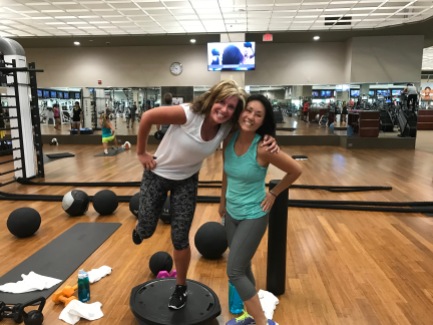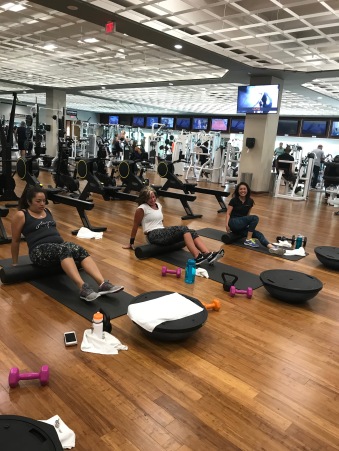“ We must use time as a tool, not a couch.” – J.F. Kennedy
It has been 3 1/2 years since I contributed to my blog and almost 2 years since my mother’s passing. Time has morphed into different meanings for me since losing my mother and has unfolded its wings with patches of extreme pain, rediscovered joy and an exploration of new meaning and expanded purpose.
The process of grief is very complicated and convoluted for a caregiver. We begin to lose as soon as we take on the role; losing our sense of self, finances, security, relationships and time. We become isolated, lonely and look for community supports who truly understand the unique experience. We begin to establish new relationships with caregivers and caregiving organizations, connecting to like minded groups with similar goals and vision. The typical resources people seek out when in need lack the perspective, knowledge and abilities to implement approaches and strategies to address the many risk factors associated with the caregiver role.
For the last two years I have been deeply grieving the loss of my mother, but was also dealing with a new loss. Loss for a caregiver has an impact that strips our time leaving us scrambling for hope and solutions. But a day comes, when your loved one physically leaves this earth. The feelings and experience are so complicated and multifaceted. At the same time as your caregiver role ends, so do the relationships with all those caregiver supports who had surrounding you for years. All the organizations that used your journey to promote their work, disappear, as their perceived use for you has now ended. Time continued to unfold an experience of loss of friends, support systems, finances, sense of purpose and most importantly my mother. Grief paralyzed me and placed me on a couch of questions of new meaning. I was at a tug of war of release and gain, challenging all my perspectives and words of resilience and hope over the years. Others around me tried to pull me off the couch to fulfill their expectations of me. However, I resisted, continued to sit with me, until I was ready to move from the couch and use time as an effective tool and gift of rediscovery.
Exploring who I am through grief has been the most challenging stages of my life. Being left with the question as who I am without “my person” has challenged me to dig deep into my fifty years of life and reevaluate what truly makes me thrive. We as a society have been taught to define ourselves in life through external achievements such as our education, the careers we pursue, the salary growth over time, the increased roles in life and the obtainment of things. We have become handcuffed to definitions of who we are by others opinions, expectations and fixed mindset. Our parents may have taught us value sets that have been our building blocks on how we move in life, the choices we make and how we react to set-backs, failure, pain and loss.
However, as I move through the stages of post-caregiving self-discovery, my time has been spent on assessing the internal character of my being, what I like to call the “human factor”. The human factor is your character, your intrinsic value sets, how you interact with other human beings, what contributes to your actions and what makes you feel alive. When all else in life disappoints you or leaves you completely lost in life, it is important to tap into your “humanness”.
Below are some questions or thoughts that assisted my movement from the couch to my feet so that I could dance in life again:
- If I strip every role from me, who am I? Meaning, friend, daughter, mother, caregiver, colleague, student, teacher, trainer? These are just roles taken on in life that can help in assisting your definition of your internal being, but they are not “who” you are. Roles are a result of your desires and what drive you.
- What excites you in life and why? What is your emotional and physical reaction? Do you feel an overwhelming sense of warmth in your heart or feel physically energized by it? Many of us take on roles because of other’s wants and needs of us, leaving us drained to the core, stripping our desire and passion. We can easily become incongruent with our values and become rooted into others moral principles. Pay attention to how you emotionally and physically respond to choices you make in life or the demands placed on you.
- How have all your experiences in life developed your “ human factor”? Caregiving was a brutal experience that I don’t wish on anyone. However, it reshaped my character, enhancing my sense of integrity, and highlighting the ability to empathize with human struggle, which eventually provided a step stool from the couch to the floor. This is not a tangible item someone can buy, but rather an internal attribute birthed out of a very personal experience.
- What is your purpose and how do you know? Have you ever noticed how many people want you to help them, support them in their journey and purpose? Ask yourself why. There is something about you shining upon you that they need. Please don’t misread me here. There is nothing wrong with helping others as long as you know the why. Protect your purpose. You are unique and are called for greatness. It’s easy to be swallowed up by someone else’s objective and vision.
- Finally, do you know others stereotypes of you? This is a huge self-awareness question that will help you navigate the responses received by others as you begin to implement any steps towards your purpose. I’m going to describe my outward facing appearance as an example. First, think about those outward definitions and social norms placed on us by our culture.
I’m a white educated female with a good income, working for a reputable agency, living in a middle class America community, belonging and teaching at elite fitness facilities with a passion for health and wellness. I have beautiful dogs, go on vacations to exotic places and drive a brand new 2024 vehicle. What do you think or assume about me at this moment?
Now, let’s describe my life experiences which shaped my values and got me to the external outcome above. I grew up in extreme poverty, helping my mom clean homes and began working at the age of 15. I went to college on grants and loans with no help from my parents. I took out more loans to obtain my double masters degree at an Historically Black College. I’ve traveled the world using remaining student loan money to serve in orphanages in Kenya, Romania, and Egypt. I attended a historical African American church, leading up prison ministries, volunteering at homeless shelters and refugee camps. I rescued my mom from a homeless shelter when she was 64 due to undiagnosed Alzheimer’s Disease. I pulled from my own pension to buy a small home so she could reside with me. I ended up in the hospital at age 42 with a possible heart attack due to stress and fought back becoming a certified Spin Instructor and Certified Health and Wellness Coach. I then started my own health coaching business for caregivers. Then, 2 years ago,held my mom for 5 hours to her last breath at age 71, suffocating on her on fluids due to Alzheimer’s Disease.
Now what are your assumptions of me? Are they in line with the initial description of myself? Can you imagine how each group of people I interact with initially perceive and respond to me, from non-whites, the educated, the rich and entitled, fitness professionals, men, etc. Assumptions and perceptions can be huge road blocks for your purpose, if you let it. From an external view, I may have had many things spoon-fed to me and lived a life of entitlement. Instead, I’ve moved through struggle, pain, loss, exposure to different environments with great determination, faith and strength instilled within me by my mother. The point here, know who you are, understand societal perceptions you so that you can interact with others with skill, understanding and grace to fulfill your purpose.
In closing of this blog post, your life is intentional with great meaning. Knowing and embracing your “ human factor” will assist you in life’s pain, set-backs, and roadblocks, as well in your triumphs and successes. If we can work on fulfilling our life’s purpose as an achievement, then maybe humanity will not be so focused on the obtainment of external materialism as victory.
“ There is no greater gift that you can give or receive than to honor your calling. It’s why you were born and how you become most truly alive!” – O. Winfrey
I love and miss you so much mom! 💕























